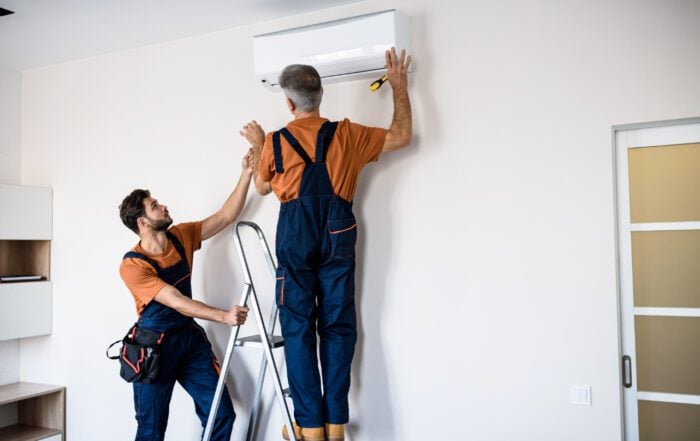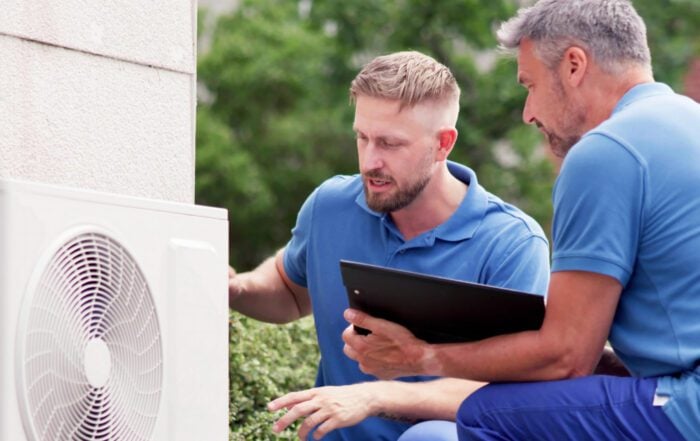It’s a Tuesday night like any other Tuesday night. You’re making dinner in the kitchen (it’s spaghetti night) while your spouse runs around, trying to occupy the kids. The dog chases after everyone, excited from all the commotion. And in your rush to try to get a meal into everyone before homework or evening activities, you forget to turn off one of your gas burners. The oil in it continues to heat and pop…and it catches the open flame. You now have a kitchen fire on your hands.
According to the National Fire Protection Association (NFPA), 41% of home fires start in the kitchen, and the #1 cause of home structure fires and fire injuries is cooking equipment. To keep your family and home safe, it benefits you to be prepared to handle a kitchen fire.
Killing a Grease Fire
One of the most common and dangerous types of cooking-related fires is a stovetop grease fire. If you don’t extinguish it properly, it will spread and wreak more havoc.
Never try to put it out by throwing water on it.
When you toss water on a grease fire, the water evaporates rapidly which can evoke a burst of flames. That, in turn, sprays the hot grease and spreads the fire. And a kitchen fire can quickly become out of hand when this happens.
The best way to take out this type of fire is to smother it and deprive it of oxygen. If the fire is in a skillet, pot, or pan, cover it with a metal lid (a glass lid could shatter from the intense heat, and anything plastic will melt). If it’s a little more spread out, use a sheet pan. You can also use baking soda or salt, but if the fire is a little larger, it could take several cups to completely put it out. So you should always keep plenty on hand, regardless of whether or not you use that much for cooking or baking.
And always keep a fire extinguisher on hand. If the lid or baking soda doesn’t work, an extinguisher will. Or at least the right class of extinguisher will. You can pick up a Class B dry chemical extinguisher (designed specifically for oil and flammable liquids) at your hardware store.
Ovens and Microwaves vs. the Kitchen Fire
Your stovetop isn’t the only place a fire can break out. Ovens and microwaves are known for this, too. Burnt bits of food in the bottom of your oven can catch fire, foods high in grease can splatter and ignite, and most of us have seen the sparks a fork in the microwave can create.
If you spot a fire in your oven or microwave, keep the door closed. Oxygen feeds the fire, so opening the door to the microwave or oven will just encourage it – and it will flare out of the opening, towards you.
The first thing you’ll want to do is turn off the oven or stop the microwave cycle. And if you’re dealing with the microwave, unplug it if you can do so safely. By leaving the door closed, the lack of oxygen should cause it to put itself out.
When Sparks Fly
We’d be remiss if we didn’t mention electrical fires. These types of fires can occur if you overload an outlet or if water is introduced and causes sparks.
The best way to avoid these? Just be careful when you work with both electrical cooking tools and liquids. And if you need to use multiple appliances, don’t plug everything into the same outlet – this is particularly important for any appliances which generate heat. Along with a potential fire hazard, overloading the kitchen’s circuit can also trip your breaker.
Of course, even if you don’t overload an outlet, an appliance with a frayed or damaged power cord can still cause trouble. If you see anything that’s coming apart or worn out, replace it.
Faulty wiring can also cause an unwanted kitchen fire. If you have an older home, request an inspection from a professional electrician. You may have out of date, aluminum wiring which is much more flammable than copper wiring. A licensed electrician can tell you if your home is safe and up to date.
A Few Other Safety Tips
- Make sure you have working smoke detectors in range of the kitchen (but not directly in the kitchen – small amounts of smoke and steam that is generated during cooking can set them off). Test these every month and replace the batteries each year.
- Stay in your home when you’re baking, roasting, boiling, or simmering; and stay in the kitchen when frying, broiling, or grilling. Never leave your house or apartment while cooking or baking.
- If it can catch fire, keep it away from the stove (pot holders, towels, etc.). That includes your sleeves! Dangling fabric can catch an open flame just as easily as it can drag through sauce.
- Clean any cooking surfaces regularly to prevent grease build-up.
- Always check the kitchen to make sure the stove, oven, or any heat-producing appliances are turned off before going to bed or leaving the home.
- When lighting a burner on a gas stove, always exercise caution.
Accidents happen, and that’s why you need to be ready. So keep your sleeves rolled up, have an extinguisher on hand, and give Stack a call for an electrical inspection to keep your home and family safe and sound.
Have Any Questions?
If this is an emergency please call 440-937-9134.
Otherwise, please feel free to call us or submit this form to schedule an appointment for service or request an estimate. We will contact you shortly!



